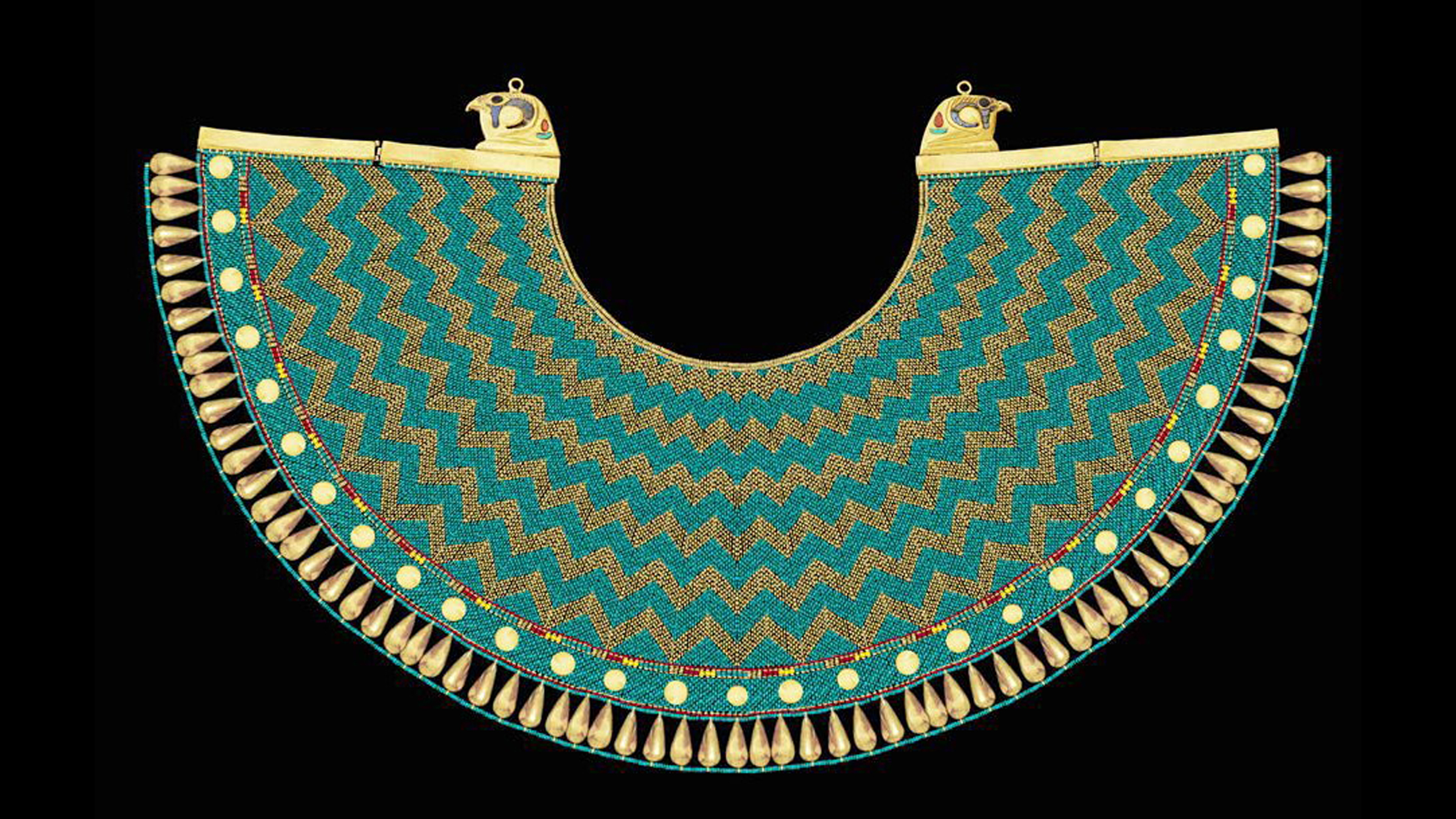Long-lost jewelry from King Tut's tomb rediscovered a century later
The British archaeologist who led the excavation into King Tut's tomb a century ago may have illegally taken some jewelry, which a researcher is now tracking down in museums in the U.S. and U.K.

Tutankhamun's tomb, discovered a century ago on Nov. 4, 1922, contained many fantastic artifacts. But some of the pharaoh's jewelry has gone missing in the century since it was discovered, despite laws specifying that the artifacts in the tomb belong to Egypt.
Some of this jewelry may have been taken out of Egypt by Howard Carter, the British archaeologist who led the excavation that uncovered the tomb. In research that will be presented at a conference in Luxor between Nov. 4 and 6, Marc Gabolde, an Egyptology professor at Paul-Valéry University of Montpellier in France, identified some of this lost jewelry and where it might be. He examined images that photographer Harry Burton snapped of finds from Tutankhamun's tomb in the 1920s and compared them to pieces found in museums and auction sites.
Gabolde's research allowed him to virtually reconstruct a broad collar that was on Tutankhamun's chest but is now in multiple pieces and locations, some of which are unknown. According to Gabolde, parts of the collar were taken by Carter and are in the Nelson-Atkins Museum of Art in Kansas City, Missouri, while some of the beads on the collar appear to have been restrung into a necklace that is now owned by anonymous owners who have tried, unsuccessfully, to sell them at auction — most recently, in 2015 at Christie's. Gabolde compared images of the collar taken by Burton to images from the museum and auction site and found that they appear to be the same. The Nelson-Atkins Museum agrees and has noted this on their website.
Related: 30 incredible treasures discovered in King Tut's tomb
Another example of lost jewelry from Tutankahmun's tomb that was taken by Carter consists of beads from a headdress. Gabolde found that the beads appear to have been restrung into a necklace that is now in the Saint Louis Art Museum. On their website the St Louis Art Museum acknowledges that this could be from the tomb.
Yet another example of restrung beads from Tut's tomb is a necklace that is now in the British Museum in London, Gabolde noted; The beads would also have been taken by Carter. Another piece of jewelry stolen from the tomb is a faience (glazed ceramic) broad collar that was in the Metropolitan Museum of Art in New York but was returned to Egypt in 2011. It had also been stolen by Carter.
Why did Carter take them?
In a 1934 letter, British Egyptologist Sir Alan Gardiner criticized Carter for stealing from Tutankhamun's tomb. Carter had given Gardiner an inscribed amulet, claiming that it was not from the tomb, but Gardiner later found that it was because it matched others from Tut's tomb that had been made from the same mold. Gardiner had gotten Rex Engelbach, an Egyptolologist and engineer, to make the identification. Gardiner wrote to Carter, telling him that the amulet was "undoubtedly stolen from the tomb of Tutankhamun" and that "I deeply regret having been placed in so awkward a position" and noting that he had not told others about Carter's theft. Egyptologist Bob Brier recently published the letter in his book "Tutankhamun and the Tomb that Changed the World" (Oxford University Press, 2022). Gardiner did not tell anyone else, not even Engelbach, about Carter's theft and he was never charged.
Sign up for the Live Science daily newsletter now
Get the world’s most fascinating discoveries delivered straight to your inbox.
Why Carter stole the artifacts is not certain. Documents in the Nelson-Atkins Museum indicate that Carter gave parts of the collar that are now in the museum to a surgeon named Berkeley Moynihan.
Aidan Dodson, an Egyptology professor at the University of Bristol in the U.K., told Live Science that he doubted that financial gain was a motivation. It's likely that Carter saw some of the pieces as being of little significance and thought that he should be allowed to give them to friends, Dodson noted. In some cases, Carter may have brought them back to England for repair or analysis. He had "a rather 'free and easy' attitude consistent with someone who had started his career in the 1890s, when archaeological morals were rather different," Dodson told Live Science in an email.
Carter may have intended to repair or analyze some of the jewelry but died before he could complete his work, but regardless of his motivations, his actions were "illegal," Gabolde said. Egypt had passed laws prohibiting taking artifacts from the tomb outside of the country without permission from the government. The laws also stated that the artifacts belonged to Egypt — which meant that Carter could not have given them to anyone legally.
Return to Egypt?
Although the Metropolitan Museum of Art repatriated the Tut jewelry in 2011, it's unclear if future repatriations from other institutions will take place.
The Nelson-Atkins Museum would have to receive a claim from the Egyptian government. "In terms of repatriation of any objects in our collection, we have a policy in place for that procedure when we receive claims," Kathleen Leighton, a spokesperson for the Nelson-Atkins Museum, told Live Science in an email.
The British Museum, the Saint Louis Art Museum and Christie's did not respond to requests for comment.

Owen Jarus is a regular contributor to Live Science who writes about archaeology and humans' past. He has also written for The Independent (UK), The Canadian Press (CP) and The Associated Press (AP), among others. Owen has a bachelor of arts degree from the University of Toronto and a journalism degree from Ryerson University.









